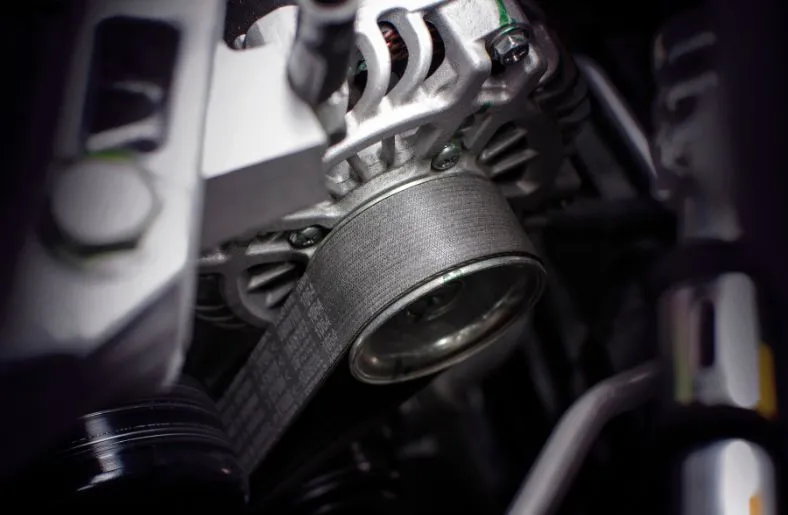Your vehicle’s alternator plays a crucial role in generating electrical power to keep the battery charged and run various electrical components. The alternator pulley, a small but essential component, ensures smooth rotation and efficient power generation. Over time, however, wear and tear can lead to friction and increased resistance, affecting the overall performance of your alternator.
In this guide, we’ll explore the importance of lubricating your alternator pulley and provide step-by-step instructions on how to lubricate alternator pulley effectively.
Table of Contents
Why Lubricate Your Alternator Pulley?
- Reduction of Friction: Friction is the enemy of any mechanical system. The alternator pulley, subjected to constant rotation, can experience increased friction as it interacts with other components. Lubricating the pulley helps minimize friction, promoting smoother rotation and reducing wear and tear.
- Enhanced Efficiency: A well-lubricated alternator pulley contributes to the overall efficiency of your vehicle’s electrical system. Improved rotation allows the alternator to generate electricity more effectively, ensuring a steady power supply for your vehicle’s electrical components.
- Extended Lifespan: Regular maintenance, including lubrication, can significantly extend the lifespan of your alternator pulley. By preventing excessive wear, you reduce the risk of premature failure and the need for costly replacements.
Tools and Materials Needed:
Before you start following the guide on how to lubricate alternator pulley, gather the following tools and materials:
- Wrench set
- Screwdriver
- Jack and Jack stands
- Lubricating spray or high-temperature grease
- Clean cloth or rag
- Safety gloves and goggles
How to Lubricate Alternator Pulley: A Step-by-Step Guide
Step 1: Safety First
Before following the guide on how to lubricate alternator pulley on your vehicle, the first thing is to ensure your safety. Park your car on a flat surface, engage the parking brake, and use jack stands if needed. Always wear safety gloves and goggles to protect your hands and eyes.
Step 2: Locate the Alternator
Identify the alternator in your vehicle engine bay. Refer to your car’s manual if you’re unsure about its location.
Step 3: Disconnect the Battery
For safety reasons, disconnect the battery’s negative terminal to prevent any electrical accidents during the maintenance process.
Step 4: Remove the Alternator Belt
Use a wrench to loosen the tension on the alternator belt. Once the tension is released, slip the belt off the alternator pulley.
Step 5: Inspect the Pulley
Inspect the alternator pulley for any signs of damage, wear, or debris. Clean the pulley using a cloth or rag.
Step 6: Apply Lubricant
Using a lubricating spray or high-temperature grease, apply a small amount of lubricant to the alternator pulley. Ensure even coverage for smooth rotation.
Step 7: Rotate the Pulley
Rotate the alternator pulley by hand to distribute the lubricant evenly. This step helps the lubricant reach all parts of the pulley and ensures optimal coverage.
Step 8: Reinstall the Alternator Belt
Place the alternator belt back onto the pulley and use a wrench to tighten the tension. Ensure the belt is properly aligned on all pulleys.
Step 9: Reconnect the Battery
Reconnect the negative terminal of the battery to restore electrical power.
Step 10: Start the Engine and Test
Start your vehicle and listen for any unusual noises. A well-lubricated alternator pulley should contribute to a smoother and quieter operation. Test your vehicle’s electrical components to ensure they are functioning correctly.
Related Guide: Can You Use WD-40 on Electrical Switches? (2023-2024)
FAQs
1. What can I use to lubricate my alternator?
Liquid Bearings is the 100%-synthetic lubricant that consistently outperforms all others. Petroleum oils and lubricant sprays leave sticky deposits when they evaporate over time.
2. Can I spray lubricant to the pulley?
WD-40 Specialist® Silicone is great for use on cables, pulleys, guide rails, valves, linkages, hinges, locks, and more.
3. Does oil damage the alternator?
If engine oil gets into the alternator because of defective engine seals or hydraulic oil or diesel fuel gets in through leaky pipes, a lubricating film forms on the slip rings and the carbon brushes. This causes a mass to form with the abrasion of the carbon brushes, which leads to poor contact or short circuits.
Conclusion
Regular maintenance is key to ensuring the longevity and efficiency of your vehicle’s components. Lubricating the alternator pulley is a simple yet effective way to reduce friction, enhance efficiency, and extend the lifespan of this critical component.
By following this comprehensive guide on how to lubricate alternator pulley, you can perform the lubrication process with confidence, contributing to the overall health and performance of your vehicle.
Consider your car’s manual for specific instructions and recommendations tailored to your vehicle model.

